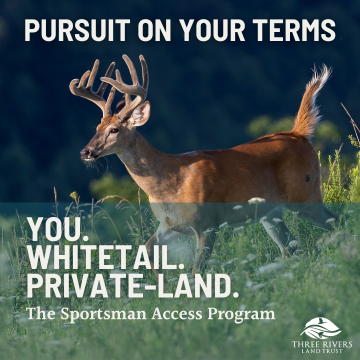
In the age of GPS and smartphones, map reading and orienteering may seem like outdated skills. However, they remain essential for outdoor enthusiasts venturing into remote areas where technology can fail. Whether you're hiking, backpacking, or planning a wilderness adventure, mastering these skills can enhance your navigation ability and ensure your safety.
This guide covers the fundamentals of map reading and orienteering, empowering you to navigate confidently through the great outdoors.
Why Map Reading and Orienteering Are Crucial
Technology is a helpful tool, but batteries die, signals fade, and devices malfunction. Learning to navigate with a map and compass is a reliable backup that every outdoor adventurer should master. Orienteering not only helps you stay on course but also deepens your connection to the landscape by teaching you to read its natural features.
Understanding Topographic Maps
Topographic maps are an essential tool for navigating in the wilderness. They display natural and man-made features, offering a detailed view of the terrain. Here are the key elements to understand:
1. Contour Lines
- Contour lines represent elevation and the shape of the land.
- Closely spaced lines indicate steep slopes, while widely spaced lines show flat terrain.
- Circles with decreasing size typically indicate peaks, while concentric circles with hatch marks show depressions.
2. Scale
- Map scale indicates the relationship between map distance and real-world distance (e.g., 1:24,000 means 1 inch equals 24,000 inches in the real world).
- Smaller scale maps (e.g., 1:100,000) show larger areas with less detail, while larger scale maps (e.g., 1:24,000) show smaller areas with greater detail.
3. Legend and Symbols
- The legend explains map symbols, such as trails, water sources, and campsites.
- Learn common symbols like dotted lines for trails, blue lines for rivers, and black squares for buildings.
4. Grid System
- Topographic maps often include a grid of latitude and longitude lines or UTM (Universal Transverse Mercator) coordinates to pinpoint locations.
Mastering the Compass
A compass is your partner in navigation. Here’s a breakdown of its key components and how to use it:
1. Parts of a Compass
- Baseplate: The flat, transparent base that rests on the map.
- Rotating Bezel: The circular ring with degree markings (0-360 degrees).
- Magnetic Needle: Always points to magnetic north.
- Orienting Arrow: Lines up with the magnetic needle to orient the compass.
2. Basic Compass Skills
- Taking a Bearing:
- Hold the compass flat and point the direction-of-travel arrow toward your destination.
- Rotate the bezel until the orienting arrow aligns with the magnetic needle.
- Read the bearing where the direction-of-travel arrow intersects the bezel.
- Following a Bearing:
- Rotate your body until the magnetic needle aligns with the orienting arrow.
- Walk in the direction of the travel arrow, keeping the needle aligned.
3. Adjusting for Declination
- Magnetic north differs from true north. The angle of difference is called declination.
- Adjust your compass to account for the declination value indicated on your map for your region.
Combining Map Reading and Compass Skills
Map reading and compass skills come together in orienteering. Here's how to navigate effectively:
1. Orient the Map
- Place your map on a flat surface.
- Align the compass's orienting arrow with the map's north-south grid lines.
- Rotate the map and compass together until the magnetic needle points to north.
2. Identify Your Location
- Use landmarks, such as mountains, rivers, or trails, to determine where you are on the map.
3. Plot a Route
- Determine your destination on the map and mark a route using natural features and trails.
- Take bearings to guide you along the way.
4. Triangulation
- To pinpoint your location, identify two or more landmarks visible on the map and in the real world.
- Take bearings to each landmark, and draw lines on the map from those points.
- Your position is where the lines intersect.
Practicing Orienteering
1. Start Small
- Begin practicing in a familiar area, such as a local park or trail system, before heading into remote wilderness.
2. Use Orienteering Courses
- Many parks and outdoor centers offer orienteering courses with marked checkpoints. These provide a safe way to test your skills.
3. Combine Technology with Traditional Skills
- Use GPS to check your progress but rely on your map and compass to navigate. This will build confidence in your abilities.
Common Challenges and Solutions
- Losing Your Bearing: Regularly recheck your compass and landmarks to stay on course.
- Navigating in Poor Visibility: Use close landmarks, follow terrain features, and rely on your compass when visibility is low.
- Running Out of Daylight: Always plan for extra time and carry a headlamp to avoid navigating in the dark.
Why Learn Orienteering?
In addition to being a practical survival skill, map reading and orienteering can deepen your outdoor experiences. These skills teach self-reliance, enhance problem-solving, and foster a greater appreciation for the natural world. By learning to navigate using maps and compasses, you’ll not only stay safer on your adventures but also feel more connected to the landscapes you explore.
Conclusion
Map reading and orienteering are essential skills for any outdoor adventurer. Whether you're trekking through dense forests, hiking mountain trails, or exploring off-the-beaten-path destinations, these abilities provide the confidence to navigate safely and effectively.
Ready to sharpen your navigation skills? Visit www.outdooradventures.pro for more tips, guides, and gear recommendations to help you master the art of orienteering.

.png)

-(2).png)


.png)


.png)





-(1140-×-106-px).png)
.jpg)
Leave Comment Below